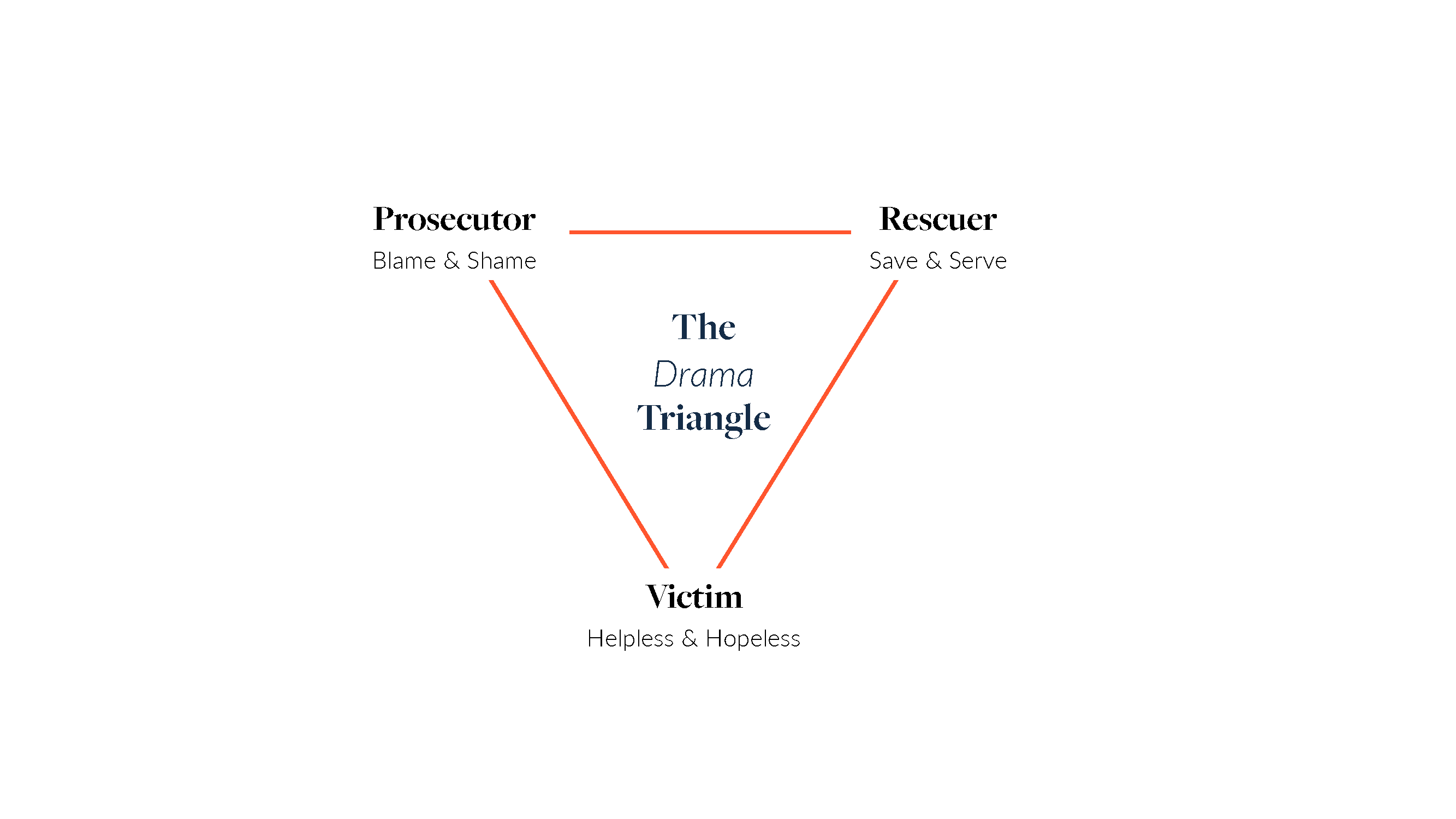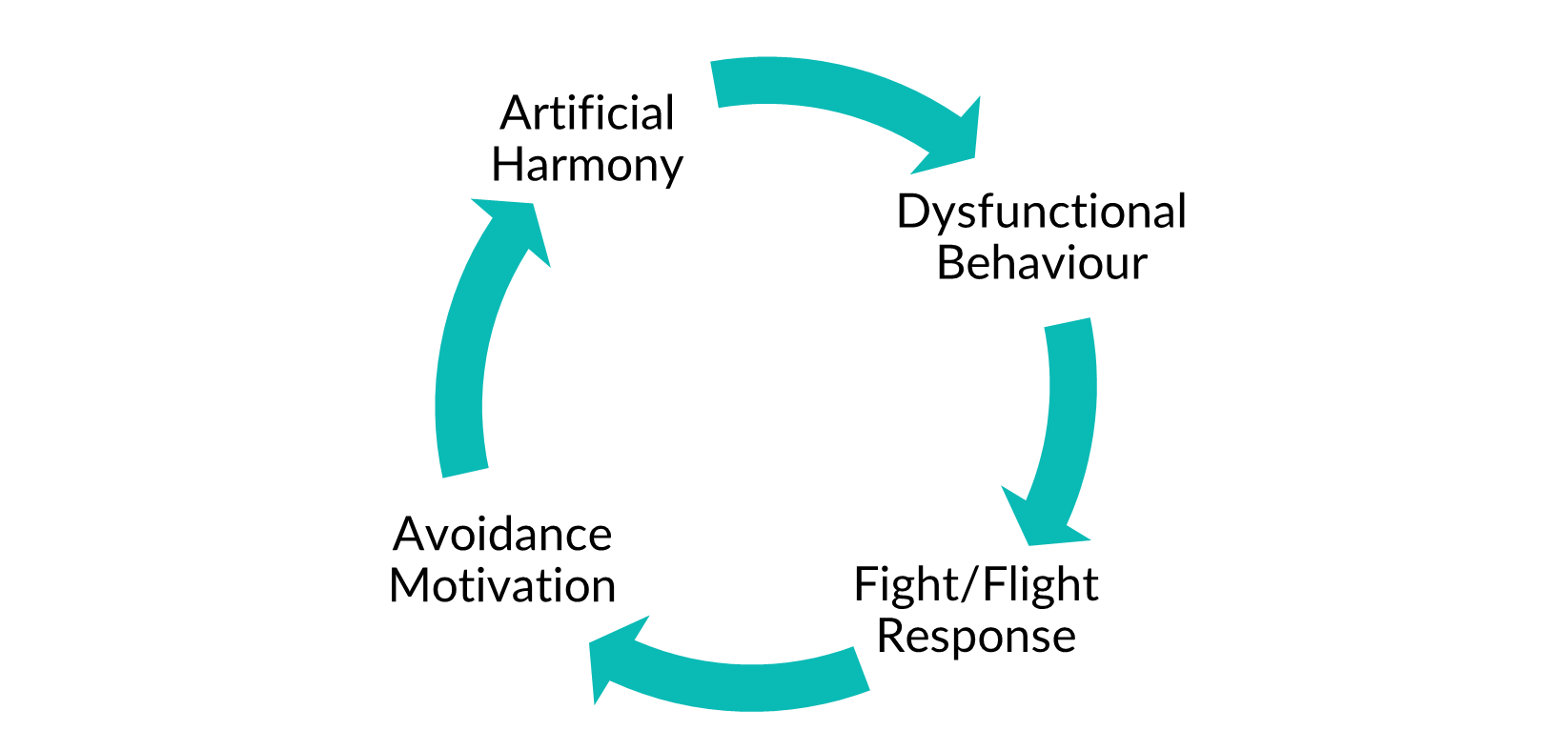Does your team have a ‘big personality’?
The dynamics between team members naturally has an influence on progress and outcomes. Unfortunately, these dynamics can become ineffective when we feel that our needs to be seen, heard and connected are not being fulfilled and our ego comes into play to try and keep us feeling safe. I’ve seen this at play with teams I’ve led and with my clients over the years and it reflects what Patrick Lencioni suggests in his work on the 5 five dysfunctions of a team.
A framework that I’ve found useful to help unravel these unhelpful, ego-driven dynamics is the Karpman Drama Triangle (Karpman, 1968). The Drama Triangle is a model of human interaction that maps the types of destructive interaction that can occur between people when personal responsibility and power come into conflict.
Karpman suggests that there are three destructive and shifting roles that we can play: Persecutor, Rescuer and Victim.
Victim – Helpless and Hopeless
Positioned at the bottom of the triangle, the Victim feels victimized, oppressed, powerless, ashamed, and seems unable to make decisions, solve problems, take pleasure in life, or achieve insight. If not being persecuted, they will seek out a Persecutor and a Rescuer who will save the day and in doing so, perpetuate their own disempowerment and negative feelings about themselves and their situation.
Rescuer – Save and Serve
The Rescuer feels guilty if they don’t rescue the Victim. In fact, so much so that they will stretch boundaries by doing more than their share and/or things they don’t want to. Their good intentions keep the Victim dependent and mean they are not experiencing the consequences of their choices – good and bad – and the valuable learning that comes with it.
Why do Rescuers feel compelled to rescue? To avoid facing their own issues and anxiety by diverting attention and energy to the Victim. Unfortunately, Rescuing can be exhausting, and Rescuers may eventually become resentful of the Victim and withdraw or move across to the role of Persecutor.
Persecutor – Name and Blame
The Persecutor is the ‘villain’ of the Drama Triangle. Controlling, critical and oppressive, their ‘should’ finger points squarely at the Victim as they insist that ‘It’s all your fault.’ They act in their own interest and as the name suggests, look for opportunities to ‘punish’ others.

Figure 1. The Drama Triangle
Addressing dysfunction feels scary
At a fundamental level, our most powerful motivator is fear.
To ensure our survival, subconscious systems have evolved to balance our choices in certain ways. When we are motivated by fear of a perceived danger or threat, we want to move away from it. (Note: the perceived danger or threat may once have been a sabre-toothed tiger, but in the boardroom this might be feeling that we are being ‘talked over’ or ignored, or being sidelined for an important project. Our brains process the real and the perceived threats in the same way and our reactions follow accordingly).
Psychologists call this desire to move away ‘avoidance motivation’. Avoidance reactions trigger the fight-or-flight response in our brain, which reduces our ability to think and process information, as well as our capacity for self-awareness and emotional regulation. As we become more defensive, the brain’s heightened need for safety can lead us to misjudge situations and people as threats.
As you can imagine, in a team where the 5 dysfunctions play out regularly, this fight-or-flight response is triggered often, and our avoidance motivation creates an unhelpful cycle of ignoring the issues which creates an ‘artificial harmony’.

Cracks in the artificial harmony
Typically, artificial harmony involves everyone ‘playing the game’ whilst in meetings – team members are reluctant to be vulnerable with one another, are unwilling to admit their mistakes, acknowledge their weaknesses or ask for help. I call this ‘plastic fantastic’ as it doesn’t reflect the mess and magic of real life and real people. And there is another, more dangerous side to artificial harmony – a lack of disagreement or debate, which has two critical consequences:
- Debate takes place outside of the room in the form of destructive commentary and sniping.
- Decisions made are not as robust, because they have not benefitted from the diverse ideas and perspectives of the team.
What can we learn from this? How can we address weaknesses to leverage team strengths?
Focussing on strengths feels good, takes less effort and moves us towards high performance more quickly. But it doesn’t mean you ignore weaknesses. If there are dysfunctional dynamics in your team, there will be a ceiling to how far focussing on individual strengths can take you.
And it’s important to be realistic. Addressing problems, dysfunctions and weakness is uncomfortable work and involves building ‘brain infrastructure’ in the form of new neural pathways, which takes time, effort, and commitment.
Research suggests that in most workplaces, we spend around 80% of our time talking about problems and just 20% discussing what’s working well. But I wonder if we are having those ‘weakness conversations’ in the right rooms with the right people?
If your team needs help to have the right conversation to create more functional dynamics, I can help. Let’s talk.
Schedule a free 30 minute discussion with me to learn more.






